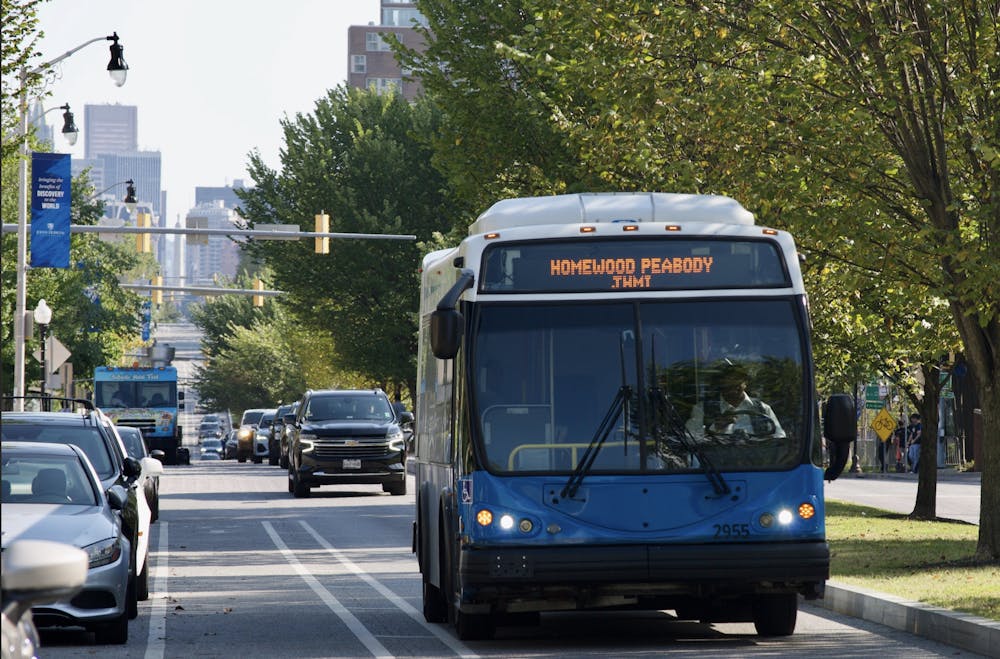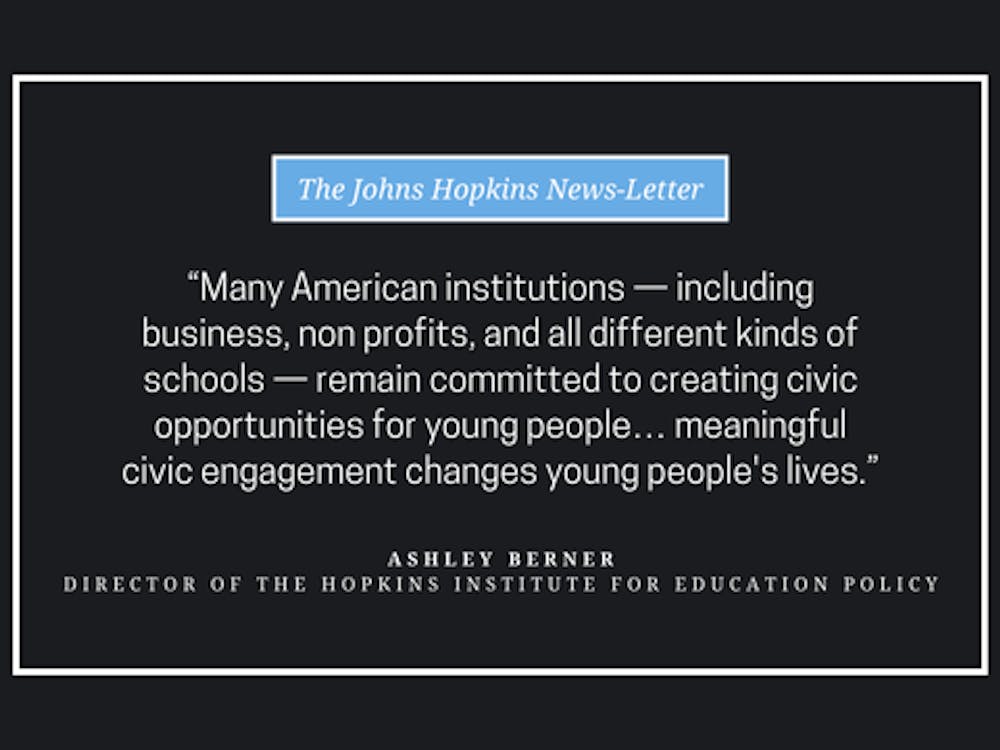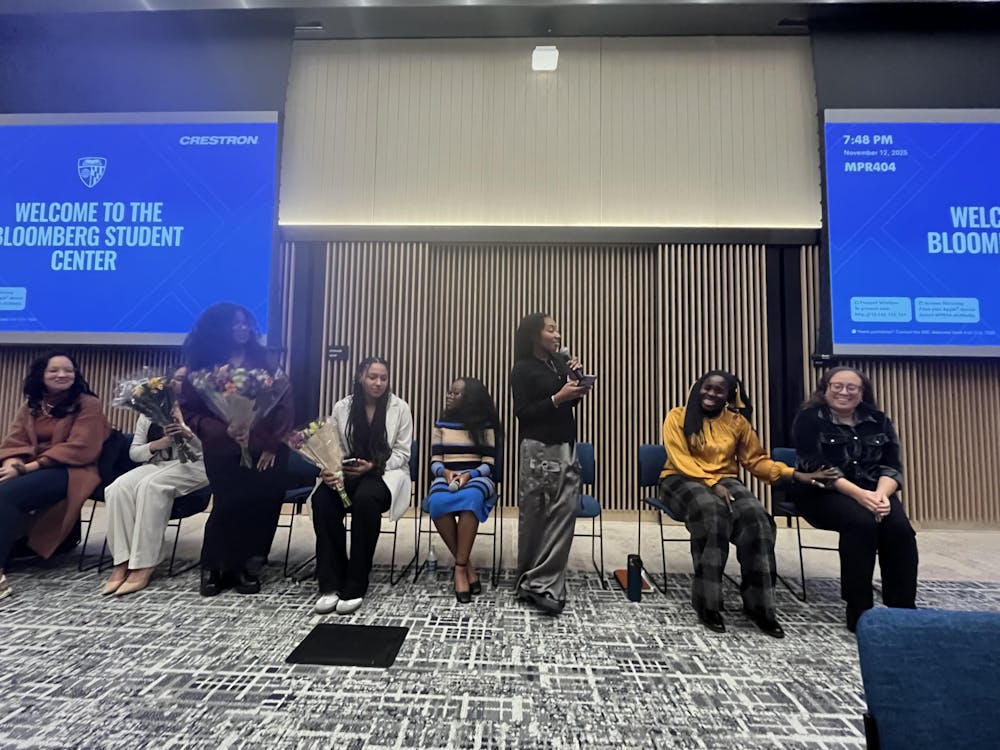The University’s Transportation Services department offers several shuttle services connecting Hopkins properties and neighboring areas to Hopkins community members. The News-Letter circulated a survey to assess student opinion towards services offered, addressing factors like convenience, efficiency and safety. The survey focused on services most used by undergraduate students, such as Blue Jay Shuttles and shuttle routes, namely the Homewood-Peabody-JHMI route.
Blue Jay Shuttles
Blue Jay Shuttles provide a nightly on-demand service to and from locations surrounding the Homewood campus, including neighborhoods like Hampden, Charles Village and Mid-Town. Starting at 6 p.m. and ending at 2 a.m., Hopkins affiliates can request a shuttle through the TransLoc app or by calling the dispatcher hotline.
According to the survey, students have split opinions on the efficiency of Blue Jay Shuttles, with 40% agreeing, 26.7% neutral and 33.3% disagreeing with the statement that shuttles bring students to their destination promptly. On their website, the Department states that their focus remains towards providing all students with the safe option of a University-sent ride with cameras, so shuttles will not directly stop at the requester’s destination.
“Night Ride service prioritizes safety first, then convenience. This means that vans with sufficient space will often be sent to other passengers awaiting pickups before being routed toward a drop-off,” the website states.
Sophomore Adela Song, however, shared how these routes in a shuttle overextend the time for drop-off to an abnormal degree in an email to The News-Letter.
“Sometimes the shuttles take very nonoptimal routes (going in circles, going back and forth) and it ends up taking almost 2 hours for me to get to my destination,” Song wrote.
During peak service hours, riders typically receive a Lyft called by a University dispatcher. In terms of obtaining a Lyft ride, on the website, the Department aims to have students picked up at a maximum of 15 minutes after the request. Survey results found that 50% of students felt that they received Lyft rides promptly, while 16.7% felt neutrally and 33.3% felt they did not receive rides promptly. For example, an anonymous student survey respondent shared how the TransLoc app misrepresents the ride’s arrival, overextending the time for pick-up.
“Shuttles will accept a ride almost at the 15-minute mark, but they can take an additional 5 to 10 minutes to arrive. Sometimes, the shuttle gets canceled, leading to a Lyft being sent with an additional wait time of around 10 minutes. Overall, it takes about 25 to 30 minutes just to order the on-demand shuttle or get the Lyft. These are some frustrating aspects of the service,” the student wrote.
While senior Sai Rayasam felt the guarantee of a Lyft is efficient for students, Rayasam corroborated the waiting claim in an email to The News-Letter.
“Considering a Lyft is guaranteed, and as long as you can wait the 15 min, [the service is convenient]. But I would never rely on [the service] for swift transport,” Rayasam said.
Shuttle Routes
Hopkins offers commuter routes, aiming to connect University properties across the city. This includes the Homewood-Peabody-JHMI Shuttle, which connects the Interfaith Center down to the Hopkins Medical Institute, making stops at the Peabody Institute, Scott-Bates Commons and Penn Station.
Many students expressed positive opinions about the routes serving their academic needs. According to the survey, 70% of students felt the routes provided convenient methods to other Hopkins institutions. However, 76.6% of students felt the routes did not give them convenient opportunities to explore Baltimore for recreational purposes. An anonymous respondent in the survey, for example, wrote about this hindrance in exploring Baltimore neighborhoods.
“I wish we got more resources on how to take advantage of local transportation lines or got advised on good neighborhoods to go to,” the student wrote.
Junior Chase Javellana expressed similar sentiments in an email to The News-Letter, wishing routes extended further into Inner Harbor.
“I wish the range would go a little deeper into Inner Harbor [given I frequently go there with my friends], but [the service] is pretty useful,” Javellana stated.
Moreover, the JHMI route offers service to Baltimore Penn Station, but no route currently exists to service Baltimore/Washington International Airport (BWI). 100% of students expressed they would like to see a shuttle that covers airport transportation in the survey.
Hopkins students also expressed concerns with sign visibility for shuttle spots, with 50% of students reporting minimal sign visibility, 16.7% feeling neutral and the remaining 33.3% feeling that signs appear clear and visible. In the survey, one student reported missing the shuttle due to unclear sign postings signaling where the shuttle will stop.
Baltimore public transportation
When compared with University transportation, the survey found that students had split views on the effectiveness of local public transportation in Baltimore. For example, 27.6% of students found Baltimore public transportation more effective than University transportation, 37.9% felt city transportation is less effective and 34.5% felt neutral.
In an email to The News-Letter, Rayasam reported feeling that University transportation services students more consistently than local providers.
“University transport is far superior given ideal circumstances. The Charm City Circulator is not bad, but university shuttles are much more consistent,” Rayasam wrote.
Similarly, Song reported University transportation to serve students more reliably, sharing her negative experiences with local transportation services.
“I rarely use Baltimore city transportation and I've had mixed experiences.” Song added, “sometimes they can be great and fast, whereas other times they completely pass by me at the stop or the drivers stop for long breaks without warning. At least I know with the Blue Jay shuttle, [the University] will pick me up or send a Lyft, so I definitely find Hopkins transportation to be more reliable.”
Hopkins also offers express shuttles directly to certain destinations, such as the Bayview shuttle to the Bayview Medical Center. An anonymous student shared her opinion on the efficiency of these express shuttles through the survey.
“It’s very difficult for students [to use University transportation] who perform research at the Bayview campus. Shuttles do not [arrive] that often, and it is difficult getting there without them. Either I have to pay $20+ for a Lyft or take Baltimore city transportation that is often unreliable and incredibly slow.”
Despite the shortcomings noted for the express shuttles, an overwhelming number of students (86.2%) use Hopkins transportation services more than city services. A student who voted neutrally on the comparison between University and city transportation shared that the primary difference between the two lies in the locations offered.
“For Hopkins students, transportation is more effective to get to places like Peabody and JHH, but I’m sure Baltimore city transit covers places like East Baltimore and the surrounding areas,” an anonymous student stated in the survey.
While not explicitly tested with the survey, some students raised concerns over the safety of University transportation. One student shared how they feel concerned with using Lyfts called via the Blue Jay Shuttle service in the survey.
“I almost always get a Lyft called because the shuttle takes too long, but I don’t love taking Lyfts and Ubers for safety reasons. I wish Hopkins ensured that everyone could get a university affiliated shuttle outside of campus,” the student wrote.





